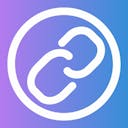Web scraping has become an essential tool for gathering information from the vast expanse of the internet. It allows you to automatically extract data from websites and transform it into a usable format for analysis, research, or business intelligence. Web Scraping saves time and resources by enabling users to access large datasets quickly and efficiently.
At URLtoText, we simplify this process even further. Our platform allows you to easily extract clean and readable text from any website with no coding skills required. With just a URL, you can get structured and useful data that’s ready to be used for analysis, reporting, or further processing. In this guide, we’ll explore how web scraping works and how tools like URLtoText can streamline the data extraction process for you.
How Does Web Scraping Work?
Web scraping is a multi-step process that involves sending requests to websites, retrieving raw data, and transforming that data into a usable format. Let’s break down the key steps involved:
Step 1: Sending HTTP Requests to a Web Page
The first step in web scraping is sending an HTTP request to the target website. This is typically done using an HTTP client like requests in Python. The request asks the web server to return the content of a specific webpage. When the server receives the request, it sends back the page’s HTML content, which forms the raw data you’ll be working with.
Step 2: Retrieving the Raw HTML Content
Once the request is made, the server returns the raw HTML content of the page. This is essentially the structure that defines how the webpage looks and includes all the elements such as text, links, images, and forms. However, this raw HTML is not structured in a way that’s easy to analyze or extract specific data, so the next step involves parsing this content.
Step 3: Parsing the HTML
To make sense of the raw HTML, it must be parsed and transformed into a more accessible format. This is where parsing libraries like BeautifulSoup and Scrapy come in. These tools break down the HTML code into a tree structure that’s easier to navigate and manipulate.
With BeautifulSoup, for example, you can search through the parsed HTML using simple methods to locate specific elements, such as headings, paragraphs, and links. Scrapy, on the other hand, is a more advanced framework that allows for large-scale scraping projects and includes its own built-in parsing engine.
Step 4: Extracting Relevant Data
Once the HTML is parsed, the next step is extracting the relevant data you’re interested in. This can be done using techniques like CSS selectors or XPath, both of which allow you to pinpoint specific elements within the parsed HTML.
CSS selectors are based on the styling rules defined for HTML elements, while XPath is a language used to query and navigate the HTML structure. For example, you might use CSS selectors to extract all product prices on an e-commerce website or XPath to pull titles and publication dates from news articles.
Step 5: Saving the Data
After extracting the data, the next step is saving it in a structured format for further use. This could involve storing the data in a CSV file, a database like MySQL or MongoDB, or even a spreadsheet for easier analysis. Web scraping tools offer built-in functions to save the scraped data directly into these formats.
Automation Using Python and Other Languages

To make the process even more efficient, web scraping is often automated using programming languages like Python, Ruby, or Node.js. Python is one of the most popular choices due to its simplicity and rich ecosystem of scraping libraries like BeautifulSoup, Scrapy, and Selenium.
With Python, you can easily set up a scraping script to automate the entire process, from sending requests and parsing content to saving the data. Here’s a basic example in Python using the requests and BeautifulSoup libraries:
python
import requests
from bs4 import BeautifulSoup
# Step 1: Send HTTP request
url = ‘https://example.com’
response = requests.get(url)
# Step 2: Parse HTML content
soup = BeautifulSoup(response.text, ‘html.parser’)
# Step 3: Extract data (e.g., titles)
titles = soup.find_all(‘h2′, class_=’title’)
# Step 4: Save extracted data
with open(‘titles.csv’, ‘w’) as file:
for title in titles:
file.write(f'{title.get_text()}\n’)
This simple script sends a request to a webpage, parses the HTML, extracts all titles within <h2> tags, and saves them into a CSV file.
With automation, web scraping can be performed at scale, whether you’re collecting thousands of data points or continuously monitoring a website for updates.
Overcoming Web Scraping Challenges
Web scraping can be a nice tool to have, but it comes with its share of obstacles. Websites often deploy anti-scraping mechanisms like CAPTCHAs or IP blocking to prevent automated data extraction.
To overcome these barriers, techniques like IP rotation and proxy servers can help mask your identity and distribute requests across different IP addresses. For CAPTCHAs, automated solving services can bypass these tests, ensuring your scraping process continues smoothly.
Another challenge is handling data accuracy and cleaning, as raw web data can be messy and unstructured. Scrapers often need to filter out irrelevant content and ensure the data is consistent and usable.
Additionally, websites frequently update their HTML structure, which can break scraping scripts. To handle this, regular script maintenance is necessary to adapt to any changes in website layout. Tools like headless browsers (e.g., Selenium or Puppeteer) are also helpful for scraping dynamic content that relies on JavaScript.
Conclusion
Web scraping is a valuable tool that enables businesses, researchers, and developers to collect vast amounts of data quickly and efficiently. While there are challenges, such as dealing with anti-scraping measures and maintaining data accuracy, these can be managed effectively with the right tools and strategies.
We simplify the web scraping process by offering an easy-to-use URL to Text Converter that converts website content into structured, readable text with just a URL. By leveraging such tools, you can streamline your data extraction efforts and focus more on analysis and decision-making, while minimizing technical complexities.

